A mobile operating system is an operating system used for smartphones, tablets, smartwatches, smartglasses, or other non-laptop personal mobile computing devices. While computers such as typical/mobile laptops are "mobile", the operating systems used on them are generally not considered mobile, as they were originally designed for desktop computers that historically did not have or need specific mobile features. This line distinguishing mobile and other forms has become blurred in recent years, due to the fact that newer devices have become smaller and more mobile unlike hardware of the past. Key notabilities blurring this line are the introduction of tablet computers, light-weight laptops, and the hybridization of the two in 2-in-1 PCs.

HTC Hero is the third phone manufactured by HTC running the Android platform, announced on June 24, 2009 in London.
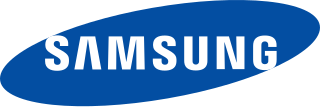
The Samsung Wave is a smartphone developed and produced by Samsung Electronics. It is the first smartphone to run the Bada operating system developed by Samsung Electronics, which was commercially released on May 24, 2010. The Wave is a touchscreen phone powered by Samsung's "Hummingbird" CPU (S5PC110), which includes 1 GHz ARM Cortex-A8 CPU and a built-in PowerVR SGX 540 graphics engine. It also has a "Super AMOLED" screen and 720p high-definition video capture capabilities. Due to shortage of Super AMOLED screens, Samsung released a successor to the device called Wave II and ceased production of the original S8500 model.

The Samsung Galaxy S is a touchscreen-enabled, slate-format Android smartphone designed, developed, and marketed by Samsung Electronics; it is the first smartphone of the Samsung Galaxy S series. It is the first device of the third Android smartphone series produced by Samsung. It was announced to the press in March 2010 and released for sale in June 2010. Due to shortage of Super AMOLED displays, Samsung released a successor to the device called S scLCD or SL and ceased production of the original I9000 model.
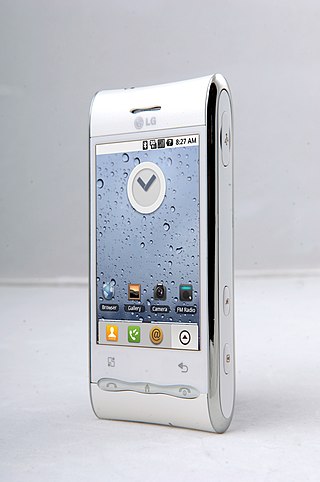
The LG Optimus, also known as the LG Optimus GT540, LG GT540 Swift and the LG Loop GT540, is a mid-level Android smartphone designed and manufactured by LG Electronics. Released running Android 1.6 Donut, the device can be officially upgraded to Android 2.1 Eclair via an LG software release.

The Samsung Galaxy Tab 7.0 or simply Samsung Galaxy Tab is an Android-based mini-tablet computer produced by Samsung and released on 5 November 2010. The tablet was first introduced on 2 September 2010 at the IFA in Berlin. The Galaxy Tab was the first Samsung Android-powered tablet to be released.

The ZTE Blade V880 is a smartphone manufactured by ZTE Corporation for the Android platform. Unveiled by Orange UK as San Francisco, it went on sale on 21 September 2010, with a white variant released later. By 2011, more than 8 million Blade handsets had been sold in more than 50 countries worldwide.

The Samsung Galaxy 3, also known as the Samsung Galaxy Apollo, Samsung Galaxy Mini in Italy, or Samsung Galaxy 580 in Hong Kong, is a smartphone manufactured by Samsung that runs the open source Android operating system. Announced and released by Samsung in July 2010, the Galaxy 3 succeeds the Samsung Galaxy Spica.

The Nexus S is a smartphone co-developed by Google and Samsung and manufactured by Samsung Electronics for release in 2010. It was the first smartphone to use the Android 2.3 "Gingerbread" operating system, and the first Android device to support Near Field Communication (NFC) in both hardware and software.
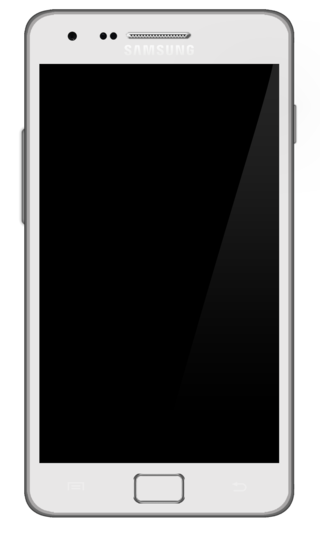
The Samsung Galaxy S II is a touchscreen-enabled, slate-format Android smartphone designed, developed, and marketed by Samsung Electronics, as the second smartphone of the Samsung Galaxy S series. It has additional software features, expanded hardware, and a redesigned physique compared to its predecessor, the Samsung Galaxy S. The S II was launched with Android 2.3.4 "Gingerbread", with updates to Android 4.1.2 "Jelly Bean".

The Samsung Galaxy Mini (GT-S5570[B/L/i]) is a smartphone manufactured by Samsung that runs the Android operating system. It was announced and released by Samsung in early 2011. In some markets it is known as Samsung Galaxy Next/Pop/NG, while it is sold in the United States as the Samsung Dart exclusively for T-Mobile. It is currently available in four different colors; steel grey, white, lime and orange. With this release, the face buttons were changed to capacitive touch, matching the rest of the Galaxy lineup.
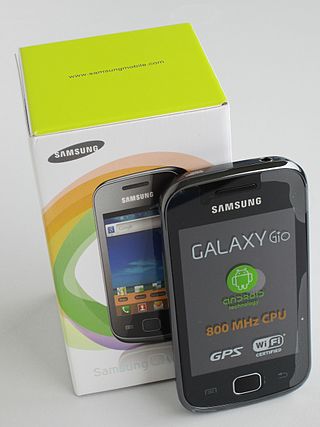
Samsung Galaxy Gio (GT-S5660) is a smartphone manufactured by Samsung and running the Android operating system.
The Samsung Galaxy R (Royal) (GT-I9103) is an Android smartphone that was announced by Samsung on August 10, 2011 as a variant to the Samsung Galaxy S II.

Replicant is a free operating system (OS) based on the Android mobile platform that intends to replace all proprietary Android components with free-software counterparts. It is available for several smartphones and tablet computers. It is written in the same programming languages as Android. The modifications are mostly in the C language; the changes are mostly to the lower-level parts of the OS, such as the Linux kernel and drivers that use it.

Samsung Galaxy Y (GT-S5360) is an Android-based smartphone by Samsung, announced in August 2011. Its main features are 3G connection with speeds up to 7.2 Mbit/s and Wi-Fi.

The Samsung Galaxy S LCD or Samsung Galaxy SL (GT-I9003) was an Android smartphone designed and manufactured by Samsung Electronics that was released in February 2011 due to shortage of Super AMOLED displays. It features a 1 GHz ARM Cortex-A8 processor, 4 GB of internal flash memory, a 4-inch 480x800 pixel WVGA Super Clear LCD capacitive touchscreen display, Wi-Fi connectivity, a 5-megapixel camera with a resolution of 2560x1920, and a front-facing 0.3 MP (640x480) VGA camera.

Samsung Galaxy Ace 2 (GT-I8160) is a smartphone manufactured by Samsung that runs the Android operating system. Announced and released by Samsung in February 2012, the Galaxy Ace 2 is the successor to the Galaxy Ace Plus.

Samsung Galaxy Mini 2 is a smartphone manufactured by Samsung that runs the open source Android 2.3 "Gingerbread" operating system. It was announced and released by Samsung in February 2012. It is available in three colors: black, yellow and orange.
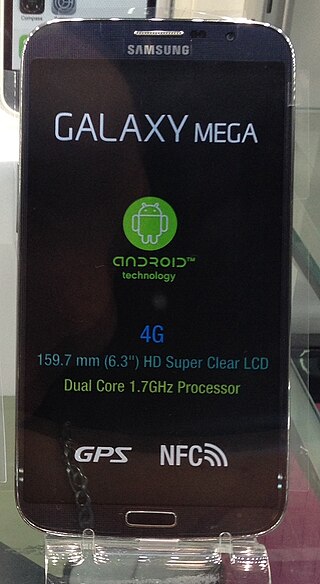
The Samsung Galaxy Mega is an Android-based phablet that was manufactured and released by Samsung. It was announced on April 11, 2013. The original model featured a 6.3 in (160 mm) screen, though a revised version was released with a 5.8 in (150 mm) screen. It has a 1,280×720 screen, a dual-core 1.7 GHz processor and an 8-megapixel camera. The phone runs Android 4.2.2 "Jelly Bean" software, and internal storage is 8 or 16 GB.
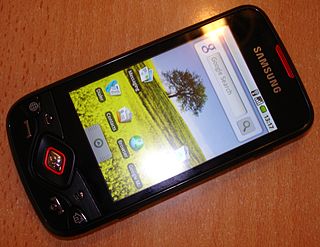
The Samsung Galaxy Spica, also known as Samsung Spica, Samsung GT-I5700, Samsung Galaxy Lite and Samsung Galaxy Portal, is a smartphone manufactured by Samsung that uses the open source Android operating system. The phone is positioned below the Samsung Galaxy (original). Even though some of its features like the camera resolution, storage and data connection speeds are lower than the i7500, its processor's clock speed is much higher at 800 MHz. It is succeeded by the Samsung Galaxy 3.



















